'Doug Aldrich Master Class: 10 Steps to Monster Chops, Part 1
Guitarist extraordinaire Doug Aldrich offers a slew of exciting and inspiring licks and technical exercises to help you become the player you aspire to be.
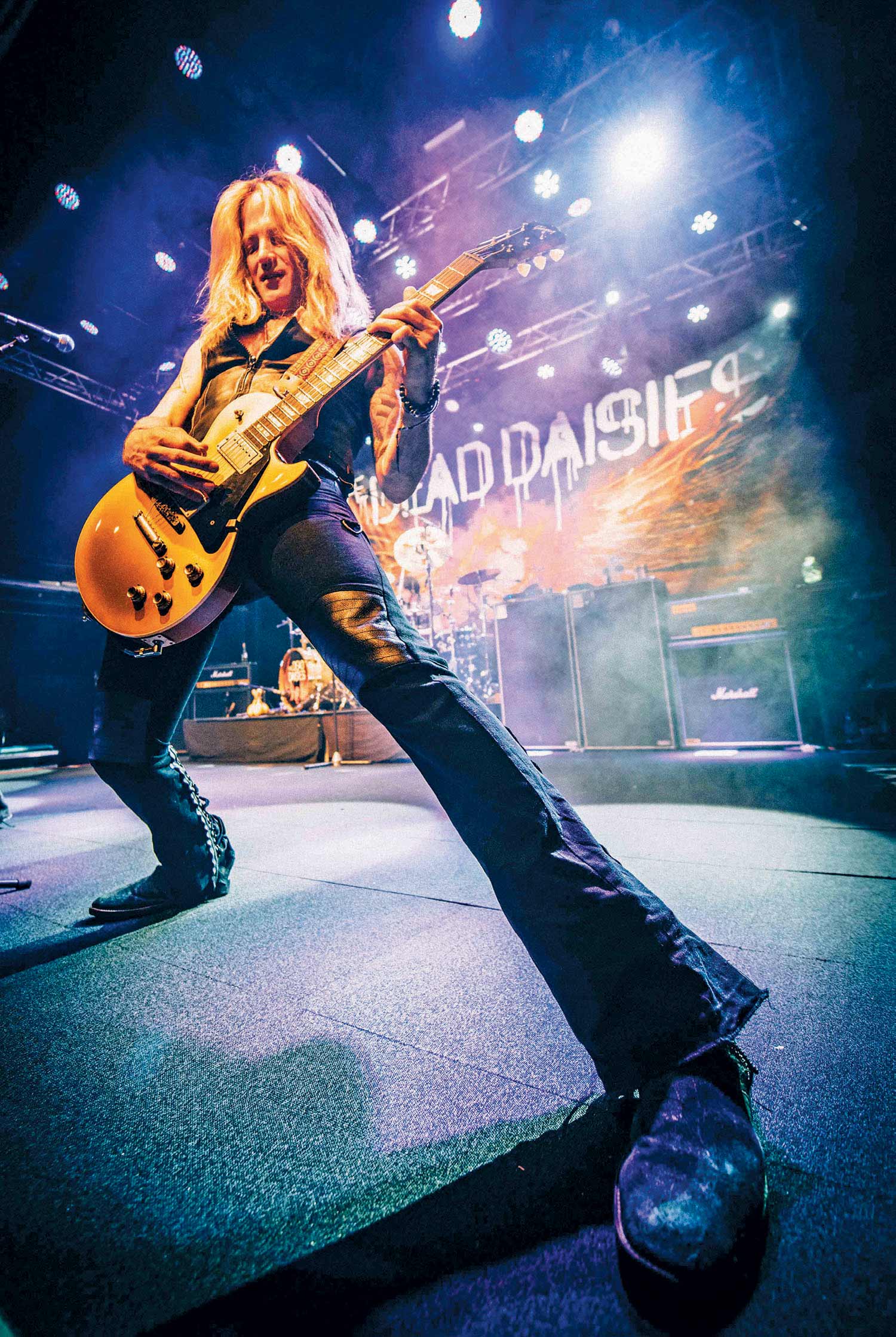
In this first installment of a two-part lesson, guitarist extraordinaire Doug Aldrich shares some invaluable insights into his formative musical influences, talks about what it means to be a rock lead guitar god and offers a slew of exciting and inspiring licks and technical exercises to help you become the player you aspire to be.
ATTITUDE
When I first started to play lead guitar, the most important thing to me was attitude. It was all about playing from the heart. The music that I got into and my influences made me feel like the people playing really meant it, and there was feeling behind everything that they played. I didn’t know anything about technique, but I knew that hearing an aggressive string bend with vibrato felt like something and meant a lot to me.
One of my earliest big influences was Jeff Beck, especially his albums Blow by Blow and Wired. I was about 11 years old when those records came out, and hearing stuff like this (FIGURE 1), which is along the lines of “Goodbye Porkpie Hat” (Wired) just blew me away. Hearing his note attack and subtle use of feedback, done with such great control, on top of all of the attitude in his playing, had such an important effect on me and made me feel great about listening to and studying guitar players.
In time, I got into working on the things everyone must in order to play with control, and I still work on those things every day. I know guitarists that can go a month without playing, pick up their instrument and start wailing, but that’s not me. I need to warm up and go through a whole process to keep my chops together, even if I’m playing every day.
Paul Kossoff of Free was another guitarist who played with so much attitude in his rhythm playing and his soloing. He would attack the guitar! Like Randy Rhoads, he was kind of short when it comes to physical stature but he played with a big sound. He had an incredibly fast, intense vibrato (FIGURE 2), and played with so much feeling. His solo on Free’s hit song “All Right Now” is a classic. You can sing that solo because it’s so memorable!
INFLUENCES, STYLE AND TECHNIQUE
All the latest guitar news, interviews, lessons, reviews, deals and more, direct to your inbox!
There are two kinds of guitar players: there are the technicians that will blow you away with certain things they do, and then there are guitarists that play with tons of feeling, like Kossoff, David Gilmour and Jimmy Page, all musicians that play solos you can sing along to.
When you’re first developing your style, it’s important that, when someone hears you play something like this (FIGURE 3), they can tell by the way you attack the guitar that it’s you. That’s a win right there. I think one of the best things a guitarist can aspire to do is develop a signature sound that is recognizable as your own, as all the greatest players have done.
Even something as simple as the way a guitar player will bend a note (FIGURE 4) can reveal things about their unique musical personality. The more you play and with the right attitude, you will in time develop a sound, and hopefully a style, that is your own. Every time you pick up the guitar and plug into an amp, you’ll find yourself going to certain sounds that are in your head, and you recognize the sound coming from your fingers and begin to develop it.
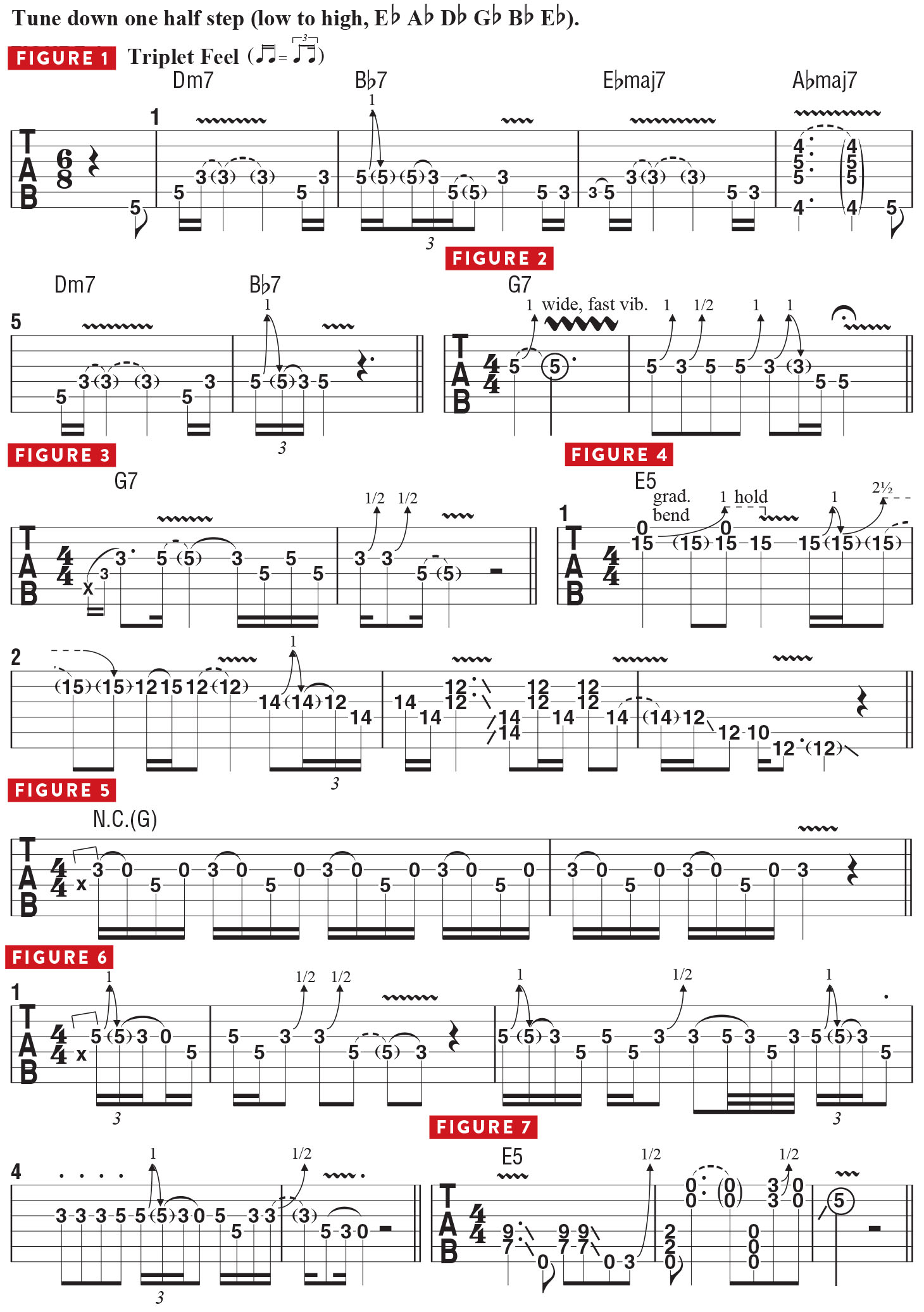
Style involves so many things, and for me, Paul Kossoff and Gary Moore were huge influences, especially Gary when he’d play things like this (FIGURE 5), picked with so much aggression and intensity. His legato playing was insane too, and the same can be said for Randy. Ritchie Blackmore was another huge influence, as was Jimi Hendrix, who just had me baffled in the beginning, but I loved what I heard. I couldn’t really copy any of those players when I was 11, but I loved trying!
It wasn’t until someone taught me some scales, and what to play them over to make them sound good, that I had my earliest epiphanies. I’d learn a cool lick and think, “Wow—that’s amazing!” The things I liked in the beginning were licks like these (FIGURE 6), basic blues licks built from hammer-ons, pull-off, bends and vibratos.
To this very day, when I first pick up my guitar, I might play a big E power chord, just to get me in the right frame of mind (FIGURE 7), and play some basic things to get my hands feeling confident. There needs to be a connection between your hands, your head and your heart. If I play something that makes me feel confident (FIGURE 8), then I can add to it little by little (FIGURE 9).
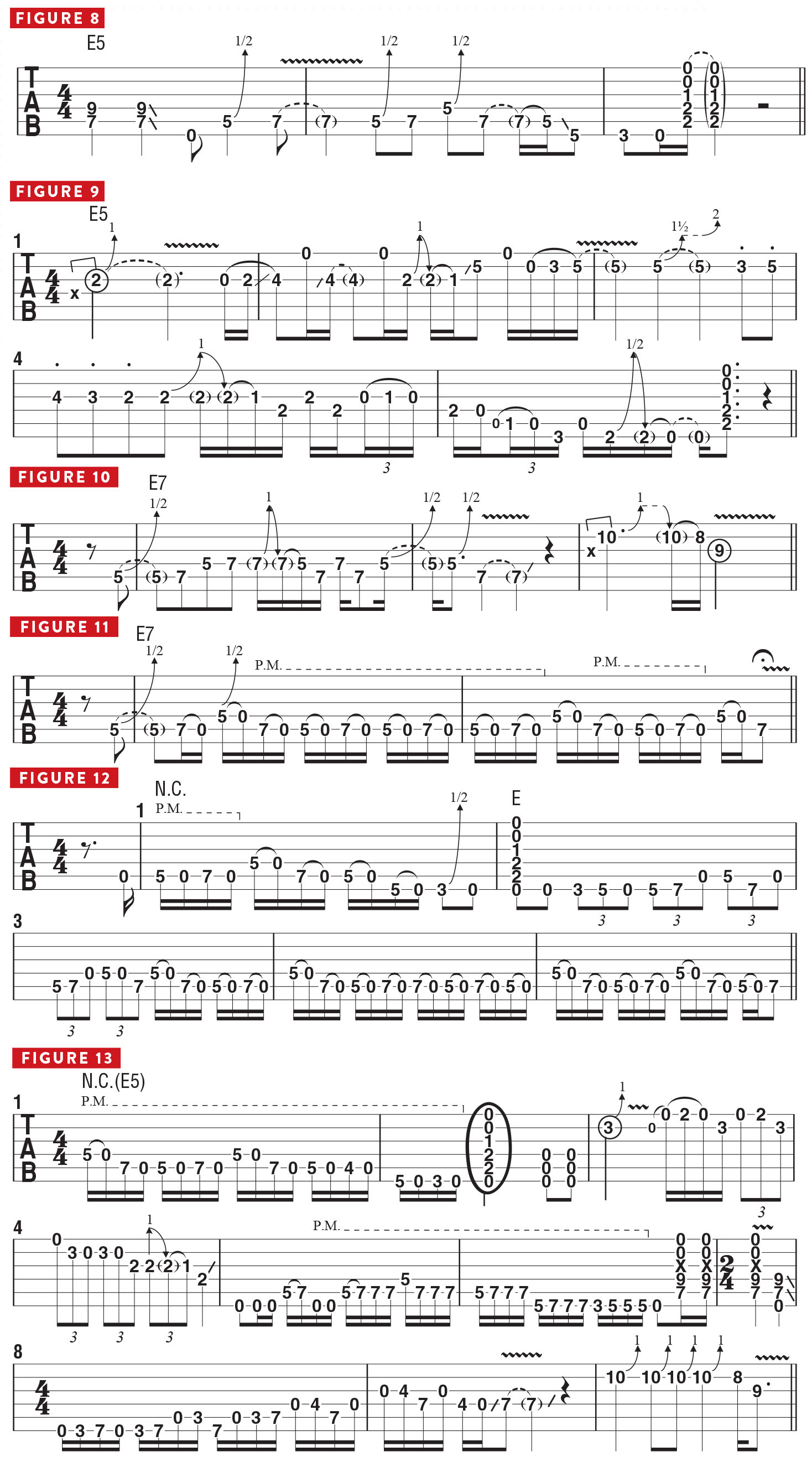
It’s always beneficial to make drills out of pentatonic-based hammer-on/pull-off phrases (FIGURE 10). If I don’t have the chance to do much warming up before a show, that stuff gets me started, and I can move into licks like these (FIGURE 11), picking all of the notes so that both hands are working together in sync with staccato picking. If I focus on a lick like this (FIGURE 12), then I can lay some legato articulation on top of that. With this phrase, you need to lock into a fixed tempo and groove in order to get the most out of it (FIGURE 13); notice that in bar 8 that I make some wide fret-hand stretches.
A great thing to do when practicing is to turn down the guitar and the gain a little bit so you can focus better on clear articulation (FIGURE 14). This is a great way to focus on a better connection between the two hands. My favorite key to play in is G, for some reason, so if I start in E with a Gary Moore-style repeating pull-off thing like this (FIGURE 15), I’ll always work my way down to the key of G (FIGURE 16).
ESSENTIAL LICKS
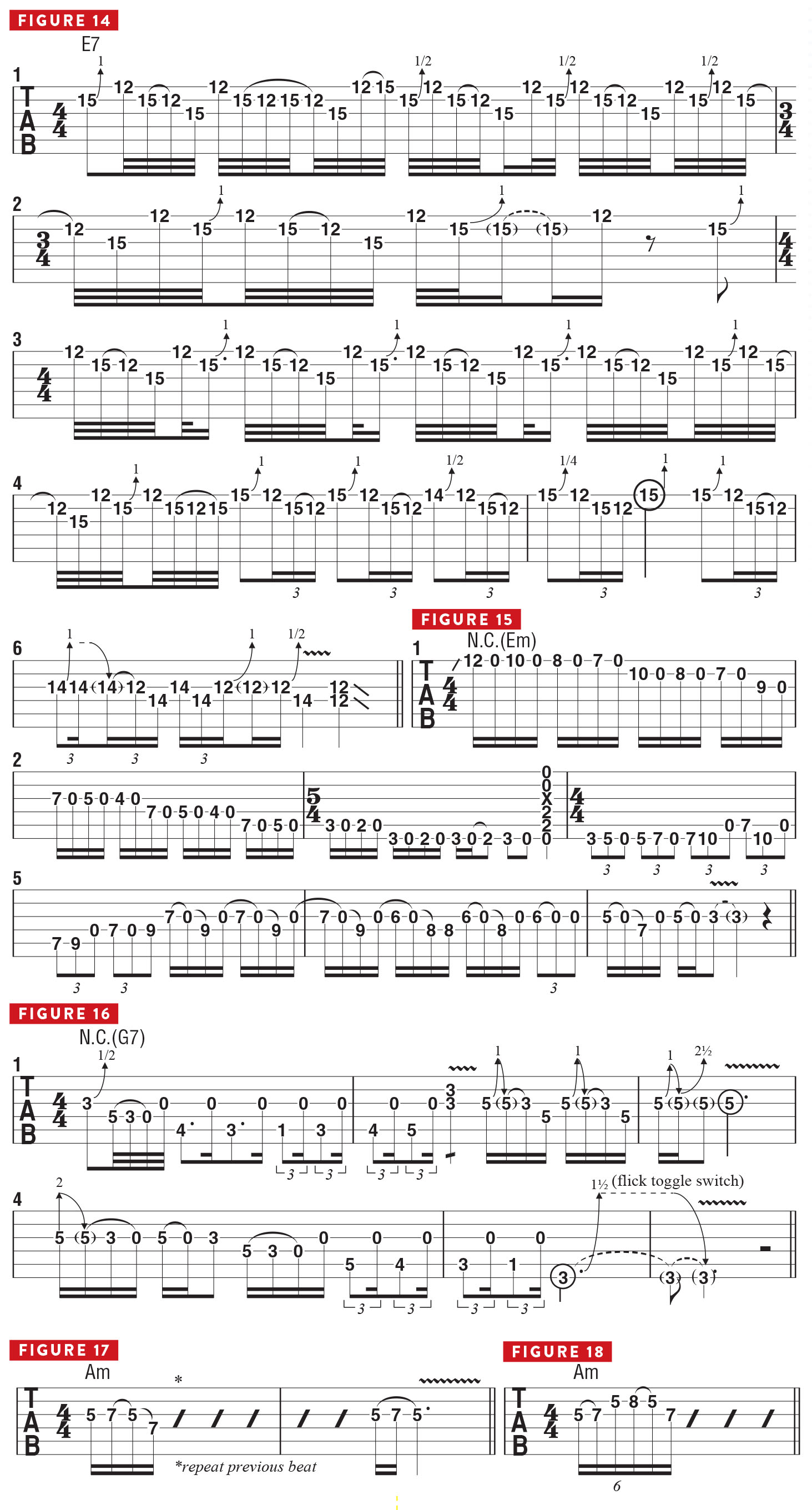
From the beginning I loved the sound of legato playing, utilizing bends, hammer-ons, pull-offs and finger slides. I think the first lick I learned was this A minor pentatonic phrase (FIGURE 17), where I’m picking only the first two of the four notes. That led to this six-note pattern (FIGURE 18), which is played with a down-down-up picking sequence. Because of Randy, I got into this legato “rolling” technique using three notes per string (FIGURE 19). I like to move back and forth between two strings before moving across the entire fretboard. With more gain, I can get this sound (FIGURE 20); when I get over to the top three strings, I incorporate hammer/ pulls to get more variety and complexity into the phrases.
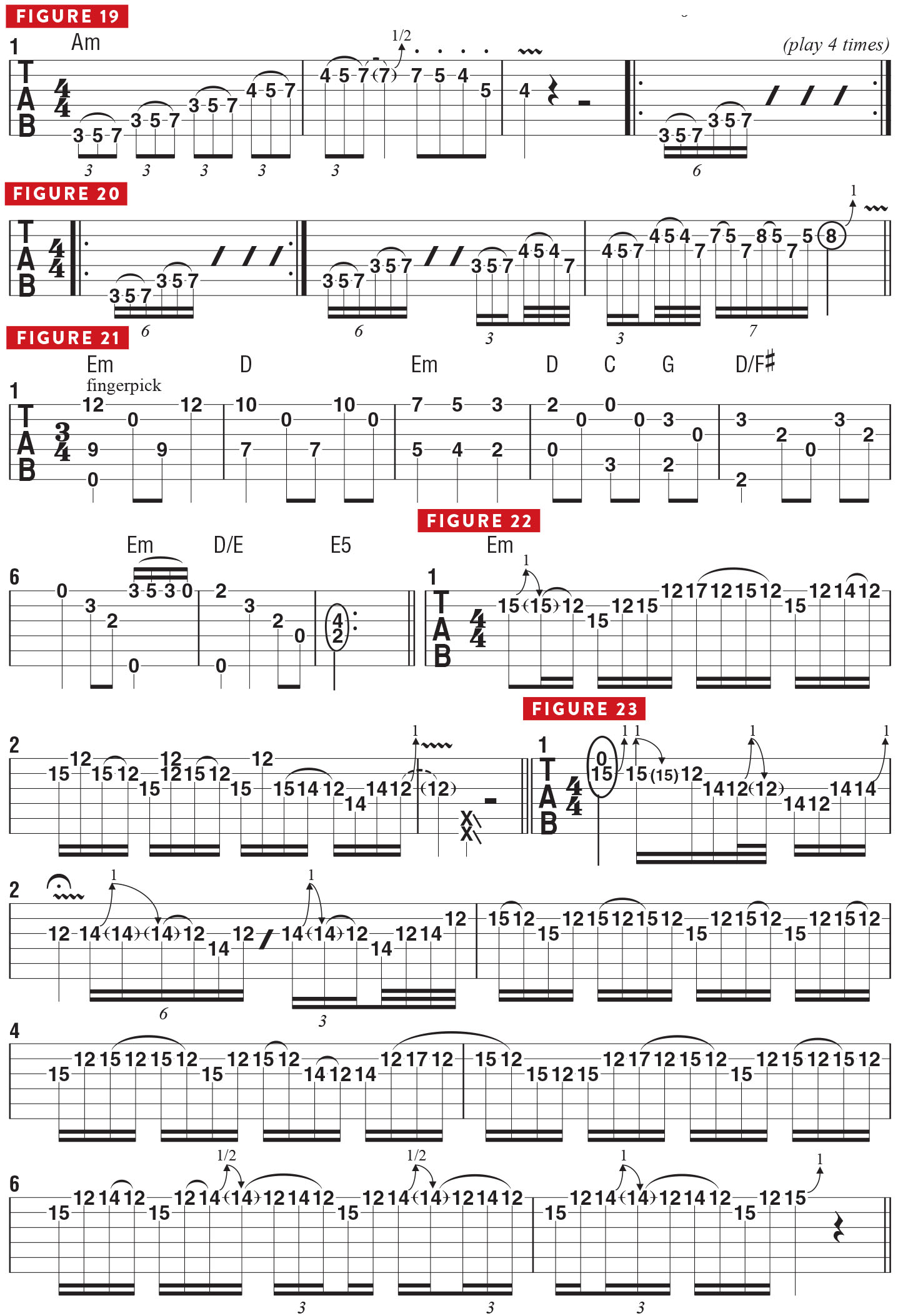
But I couldn’t play that stuff when I was 14—I wouldn’t have had any idea how to do it! I got there by seeing guitarists like Randy and Eddie Van Halen play, and the incredible technique that they had. In fact, both of those guitarists would grab the neck in a traditional “rock” way, with the thumb over the top and the “baseball bat” grip, which is less natural for me. I started with classical guitar, with the fingers coming from above, parallel with the frets and the palm away from the back of the neck (FIGURE 21). When I saw Randy, he was playing his fastest stuff in that same way, so it encouraged me to stick with the same approach.
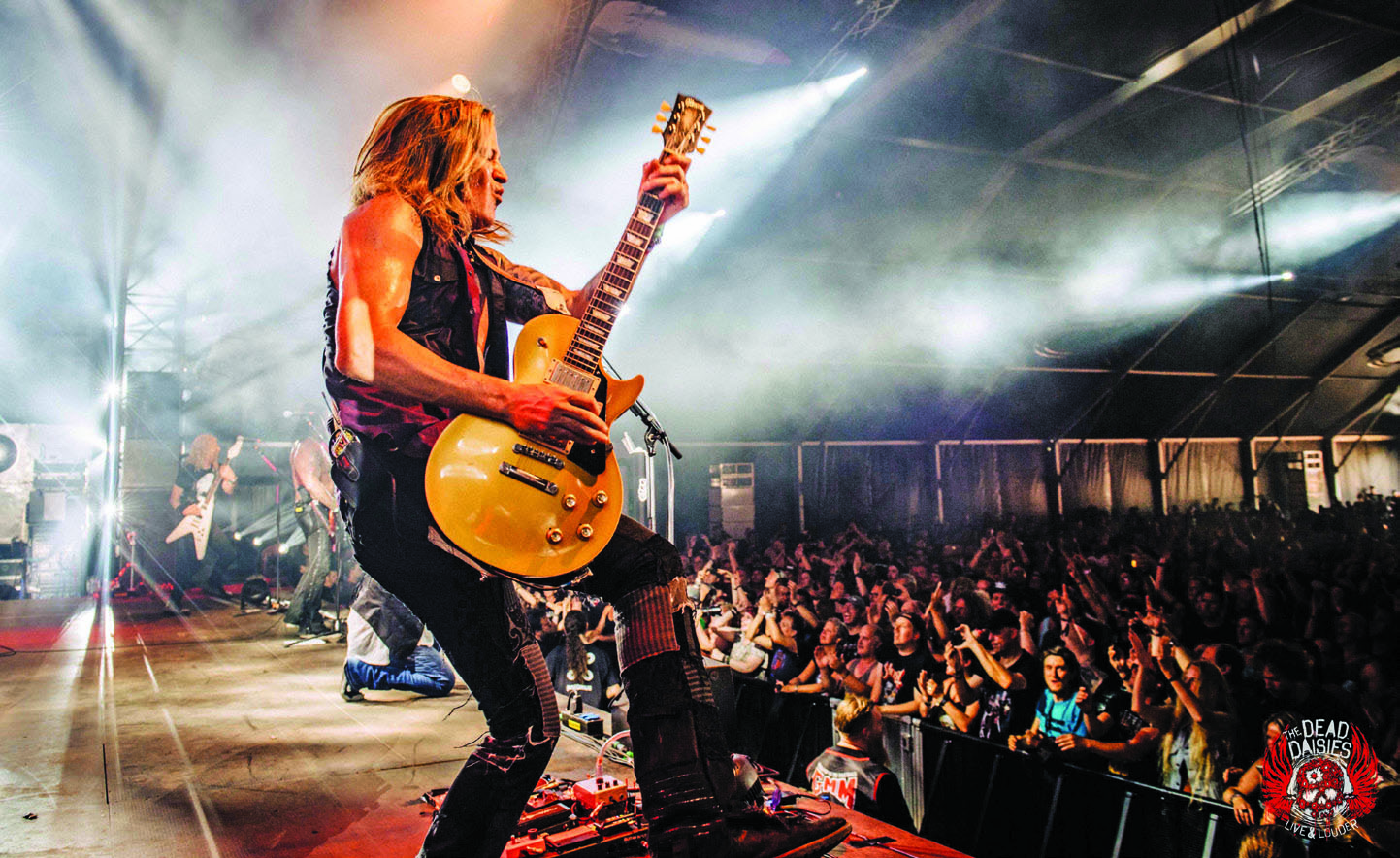
Ultimately, I’m always switching back and forth between the classical and rock grips, or fret-hand postures, especially when playing stuff like this (FIGURE 22). The classical grip allows some of the really wide stretches between the 12th and 17th frets. This naturally brings me into the legato-to-staccato stuff, in E, starting all legato (FIGURE 23), and then switching to staccato for a shift in the sound and feel (FIGURE 24) and some wide stretches, ending with legato pulls-offs and hammer-ons.
Little by little, starting off with the really simple ones (FIGURE 25), you can always ramp it up from there. For me, there’s nothing more important in rock than the pentatonic scale. That’s where the nuts and bolts of everything is for me. Everything from Chuck Berry to Tony Iommi can be traced back to the pentatonic scale.
BLUES AND ROCK AND ROLL
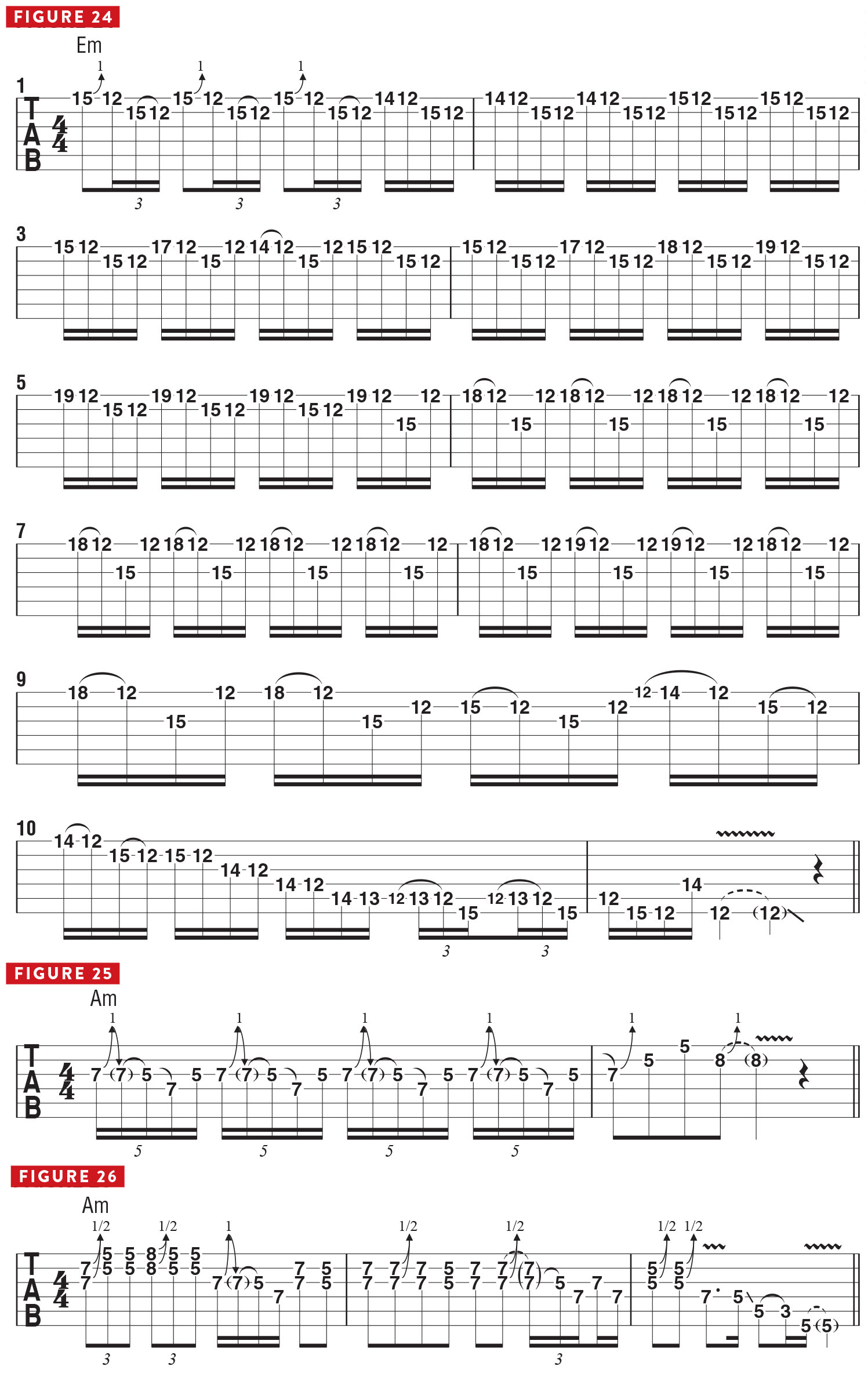
So much rock and roll guitar can be traced back to the blues (FIGURE 26), and Chuck Berry, and Elvis Presley’s guitar player, Scotty Moore, and all the players from the 1950s. Then, in the Sixties, the British guys like Eric Clapton, Jeff Beck and Jimmy Page got it, and when we get to he Seventies, there were lots of guitarists that played with a lot of fire, like Ted Nugent, Pat Travers, Tony Iommi and Ritchie Blackmore, who was one of the first rock players I ever heard with really fluid technique. He could make it sound super easy (FIGURE 27) and beautifully smooth.
EDDIE AND RANDY
When Eddie Van Halen first stepped into the limelight, he represented rock guitar playing that was on a whole new level. The arrival of Van Halen on the scene was, in my opinion, one of the biggest shifts ever in the history of rock guitar. No one had heard anything like that before. We’d heard Hendrix, Beck and Blackmore use the whammy bar, but not with that kind of ferocious attack. It’s funny how things go full circle because, apparently, Eddie got a lot of his style and approach from Clapton, who in turn got it from the original blues guys.
Eddie loves to do really fast tremolo picking licks, like this (FIGURE 28), sliding up and down a single string, with that “butterfly” or “hummingbird” pick-hand technique he has. Just incredible. His playing made everyone realize they had to up their game, in terms of technique.
I went to see Van Halen when I was around 15 years old, and I had no idea who he was or what he sounded like. I just knew he was “Van” something! I’ll never forget: the curtain went up and Eddie played one of those licks where you slide up to the top of the board on the low E string and bend it. All that coming through 18 Marshall 4x12 cabinets! Even if they weren’t all hooked up, it certainly sounded like they were!
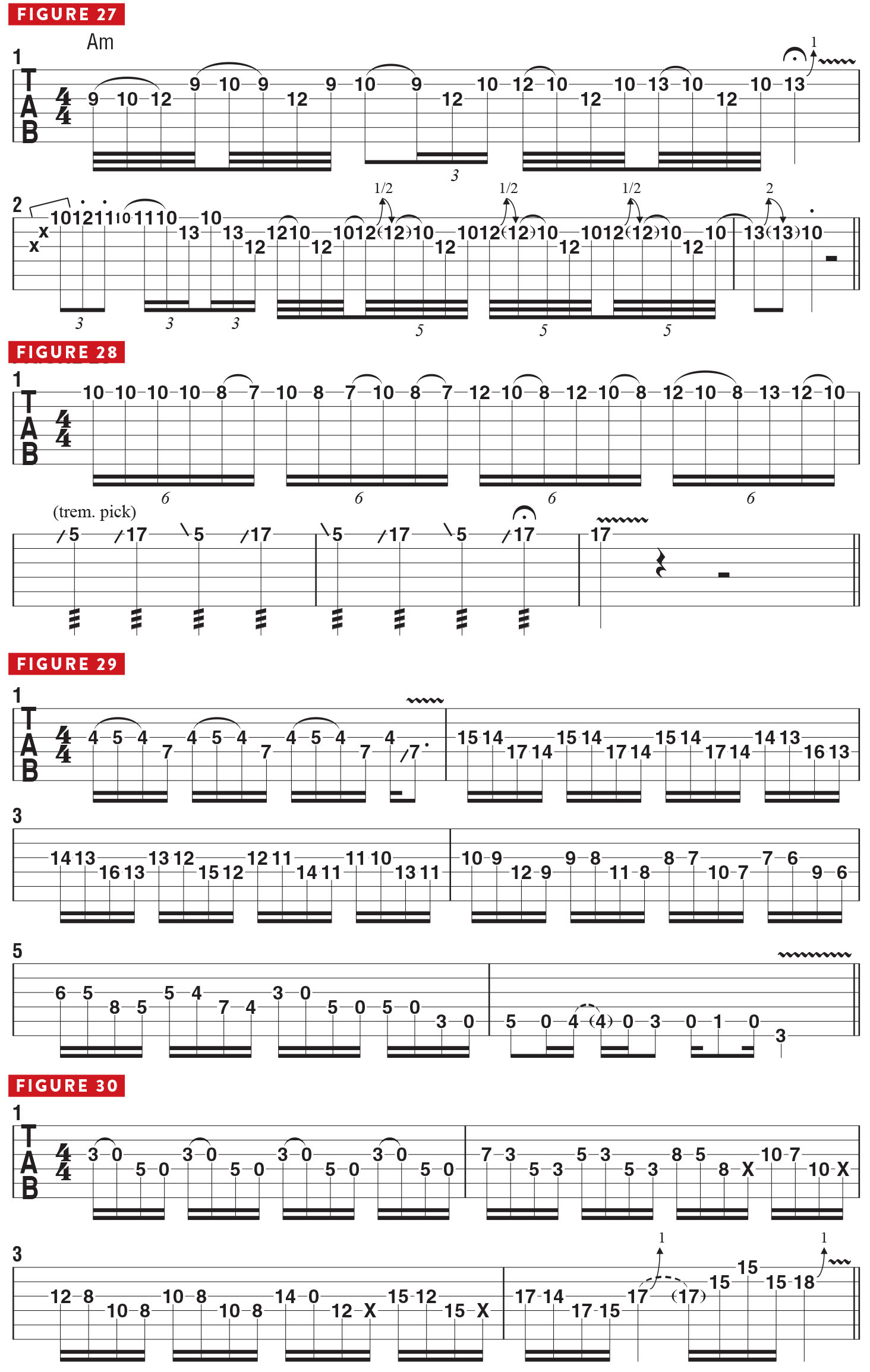
I didn’t think anyone could touch that until I went with a buddy of mine to see Randy play with Ozzy Osbourne at a theater in Philadelphia. We had fourth row seats, right in front of the stage. I wound up being truly smoked.
I could see everything Randy was doing, and he was the whole package—an incredible guitarist and a rock star. Killer tone, killer chops, in a killer band playing great music. Seeing Randy play live, I was simply blown away and left speechless!
I love those fast chromatically descending phrases Randy liked to play (FIGURE 29), picking everything and really picking hard. He attacked the strings very aggressively (FIGURE 30), and when he would bend a string, he’d shake the entire guitar. Randy’s playing upped the game even that much more.
